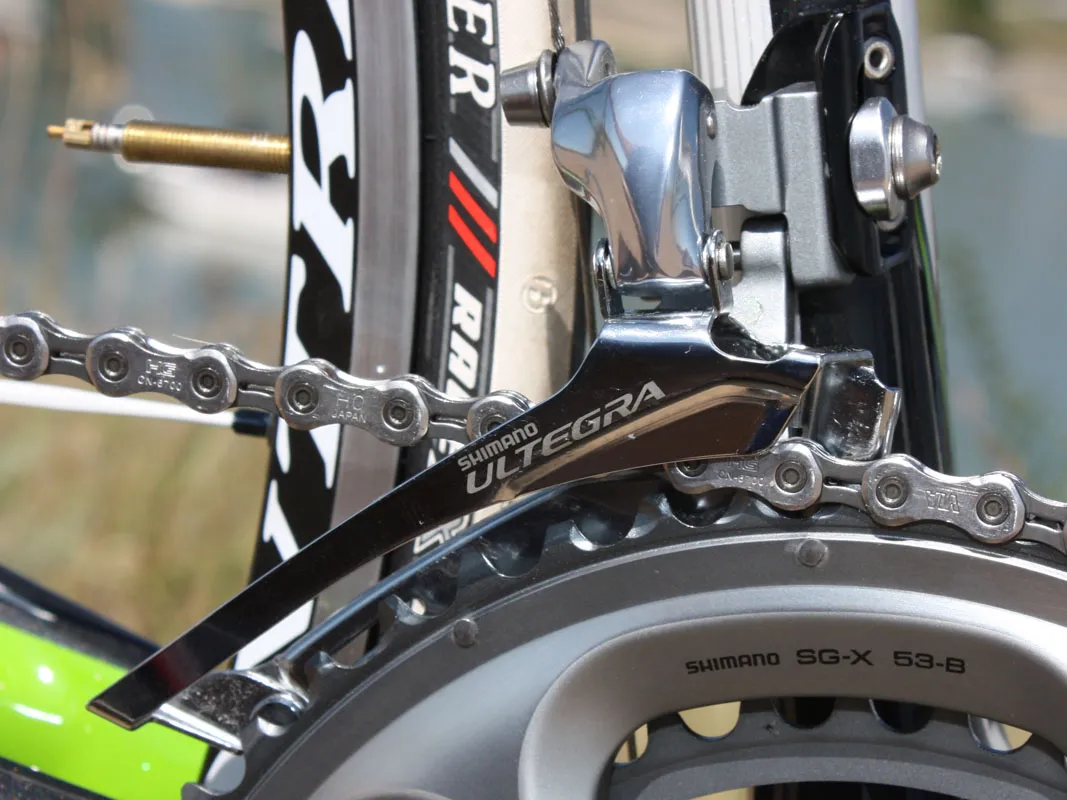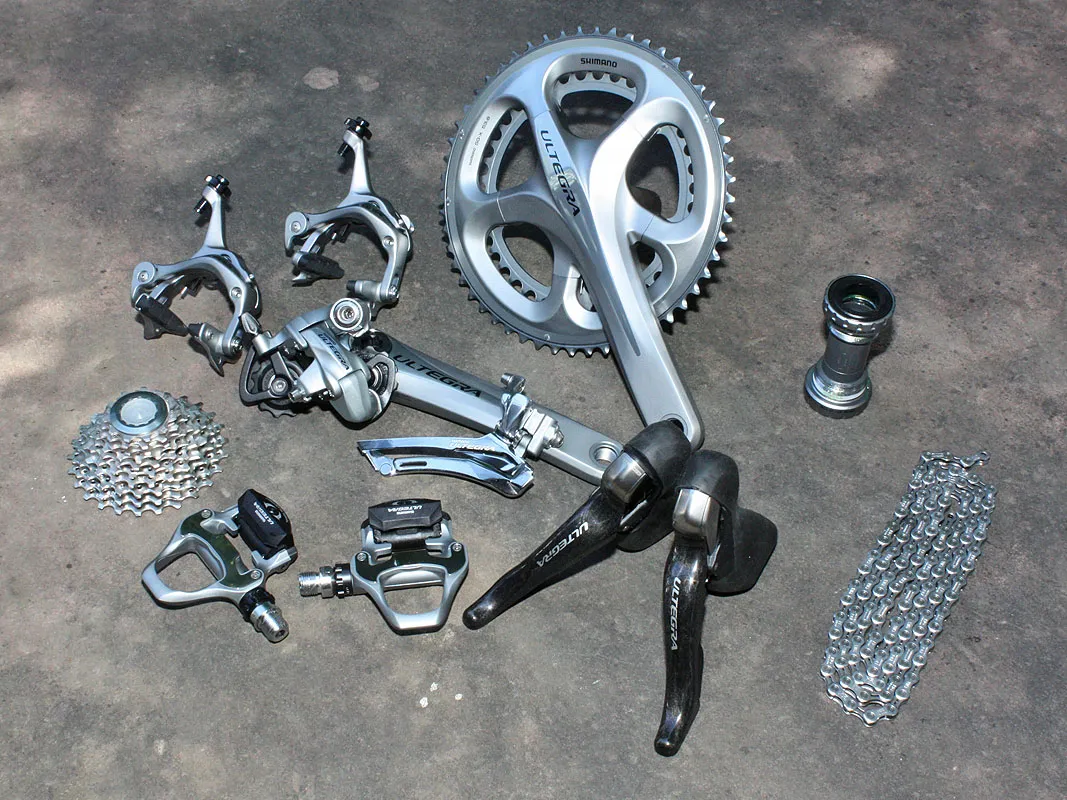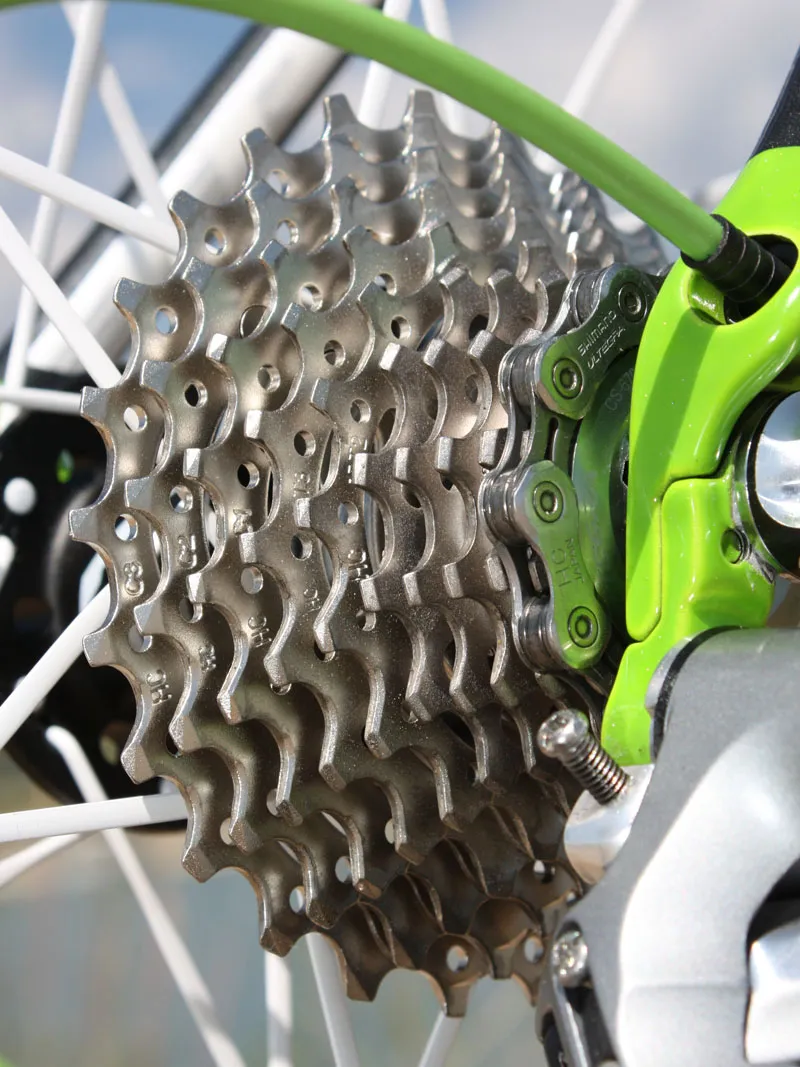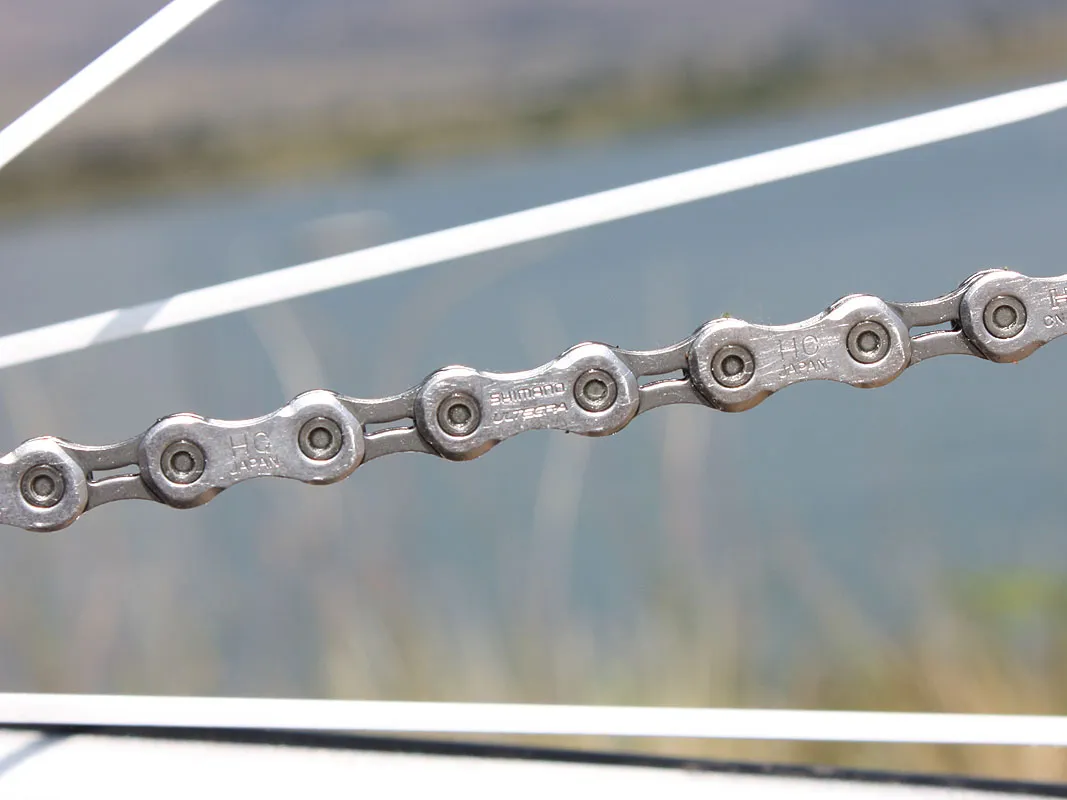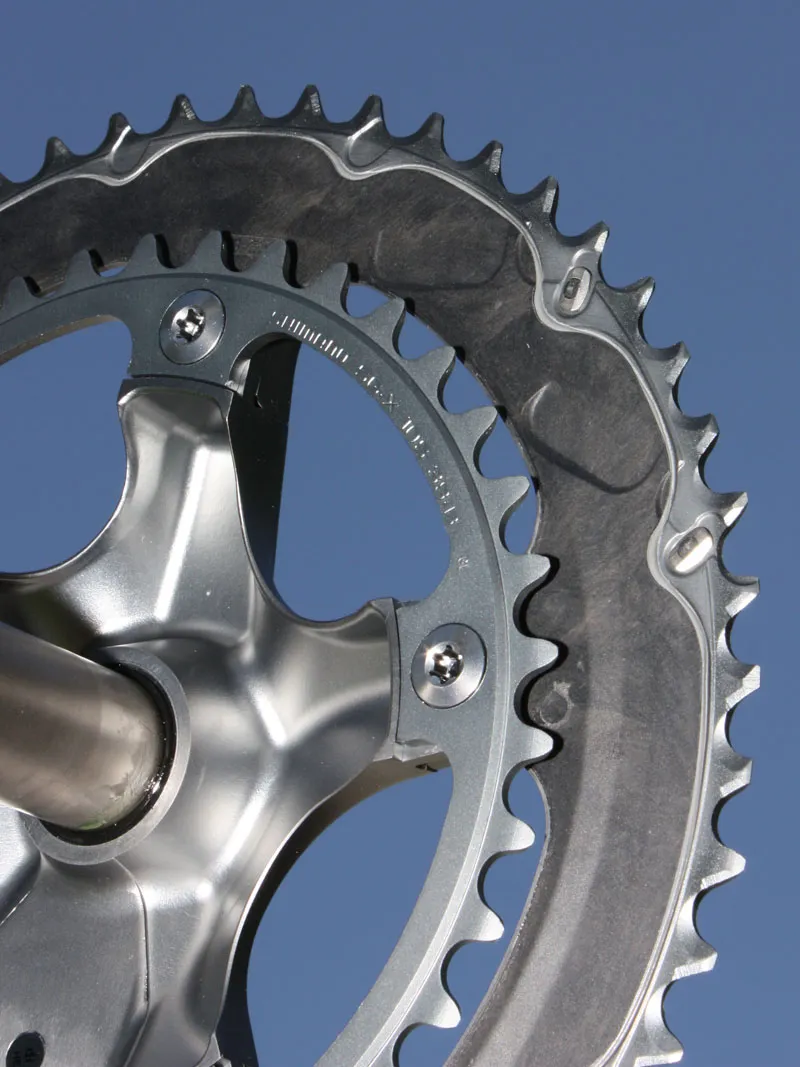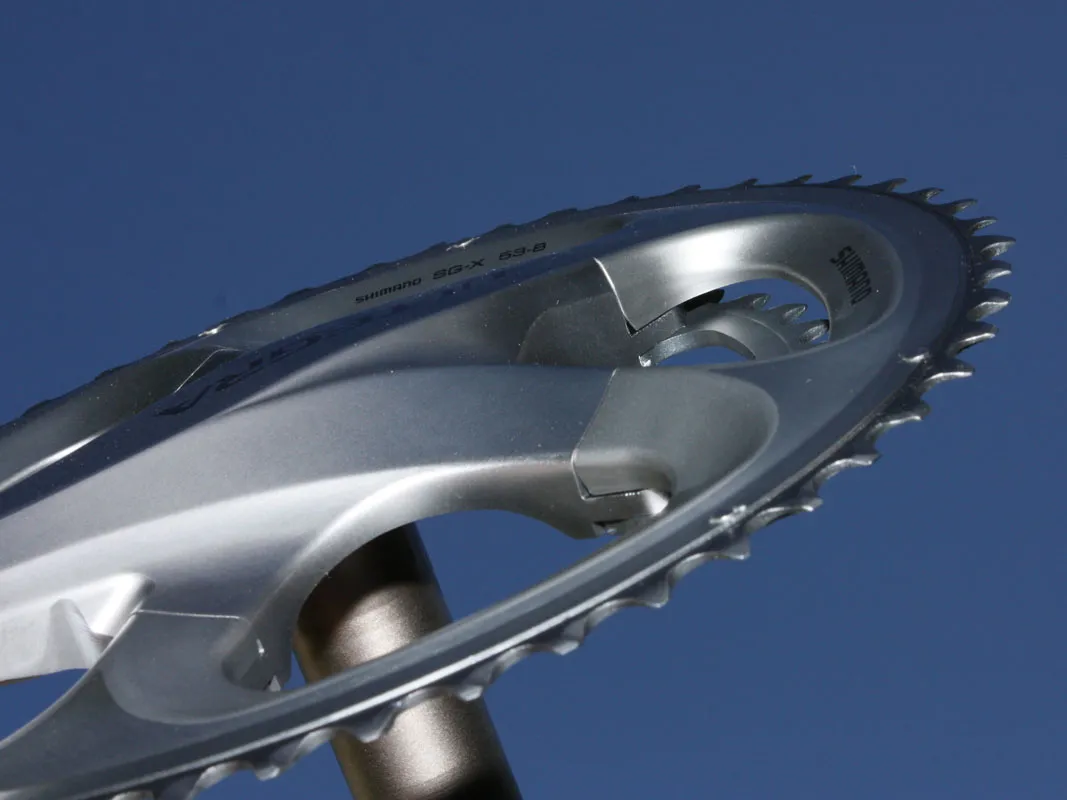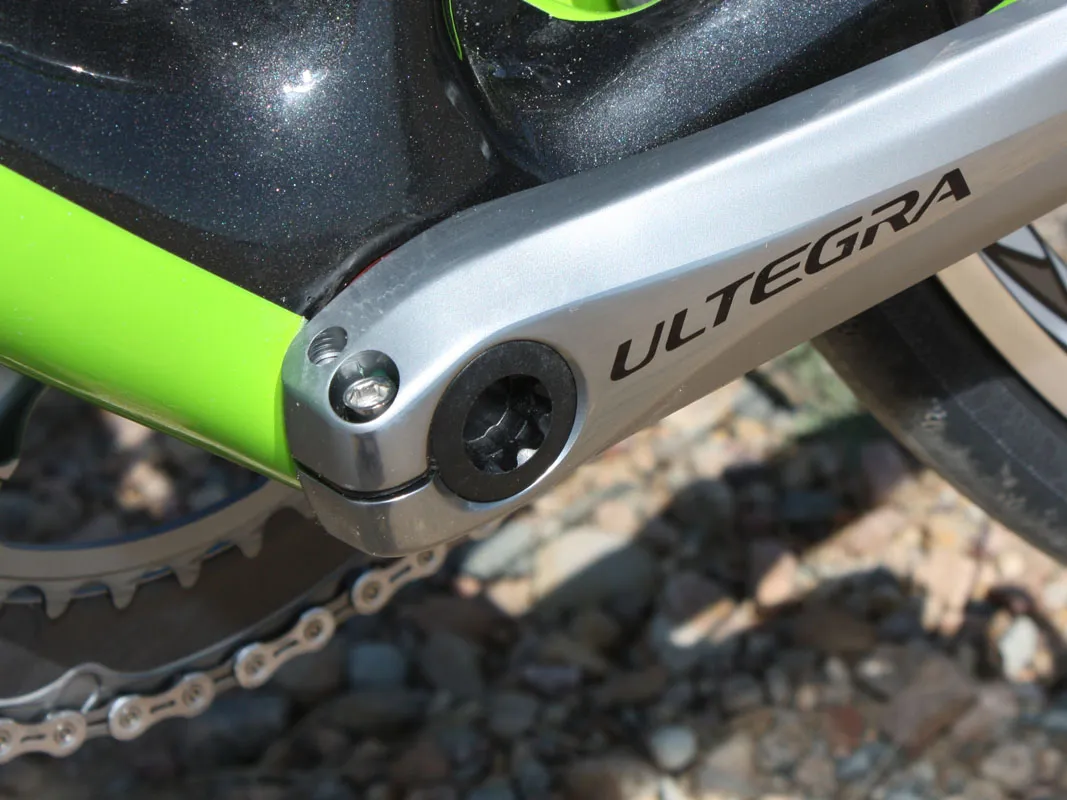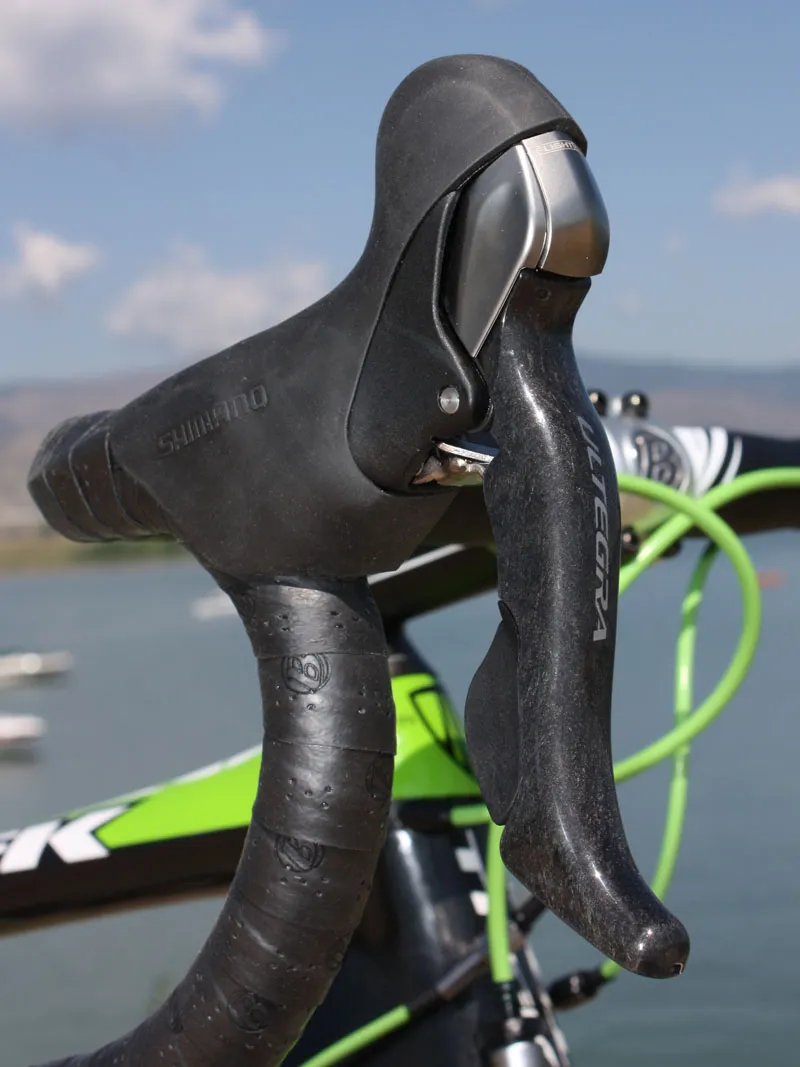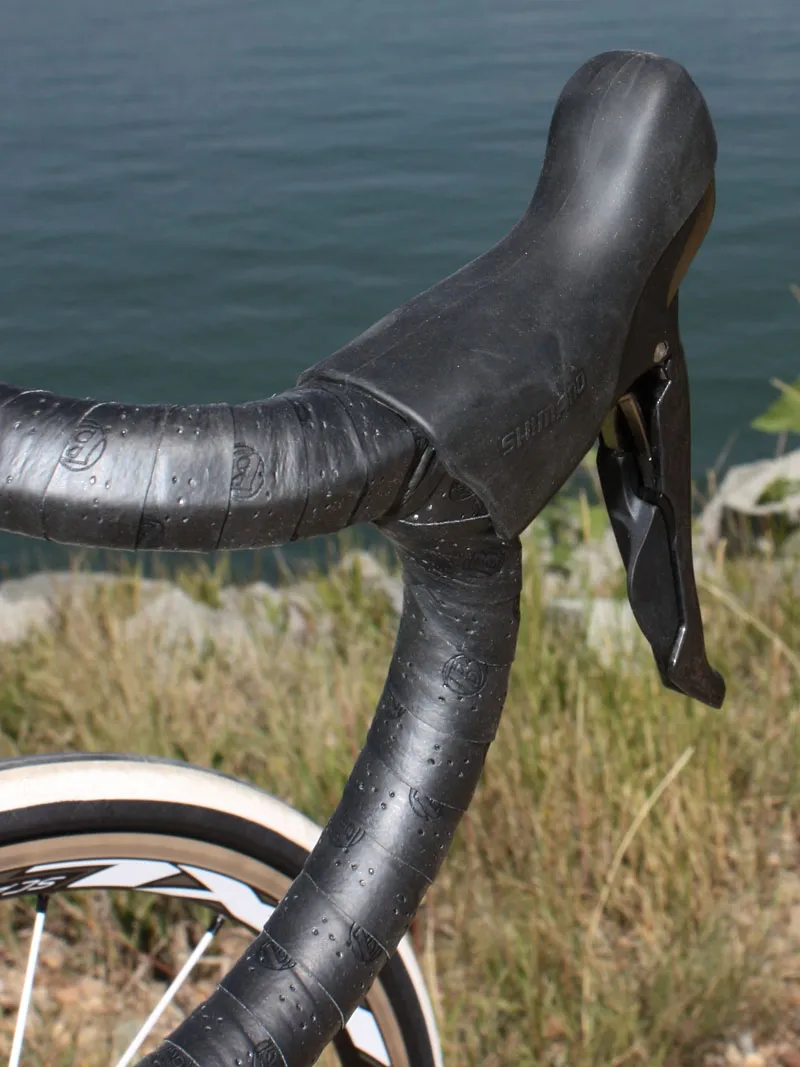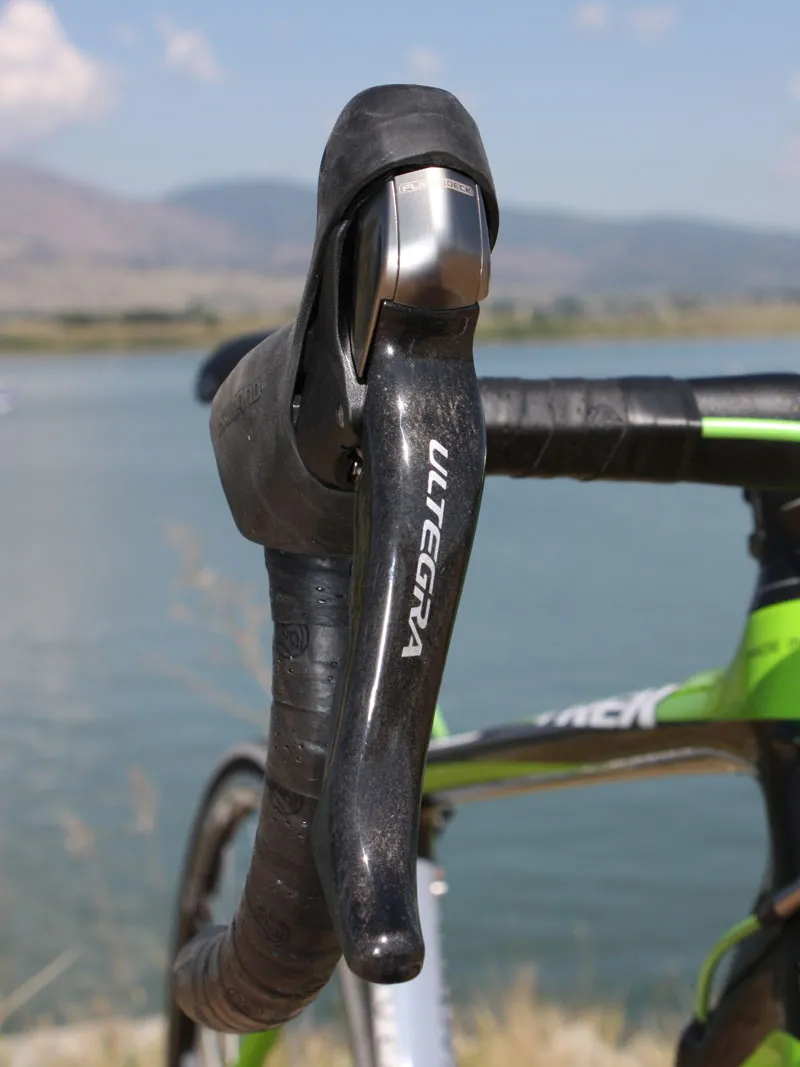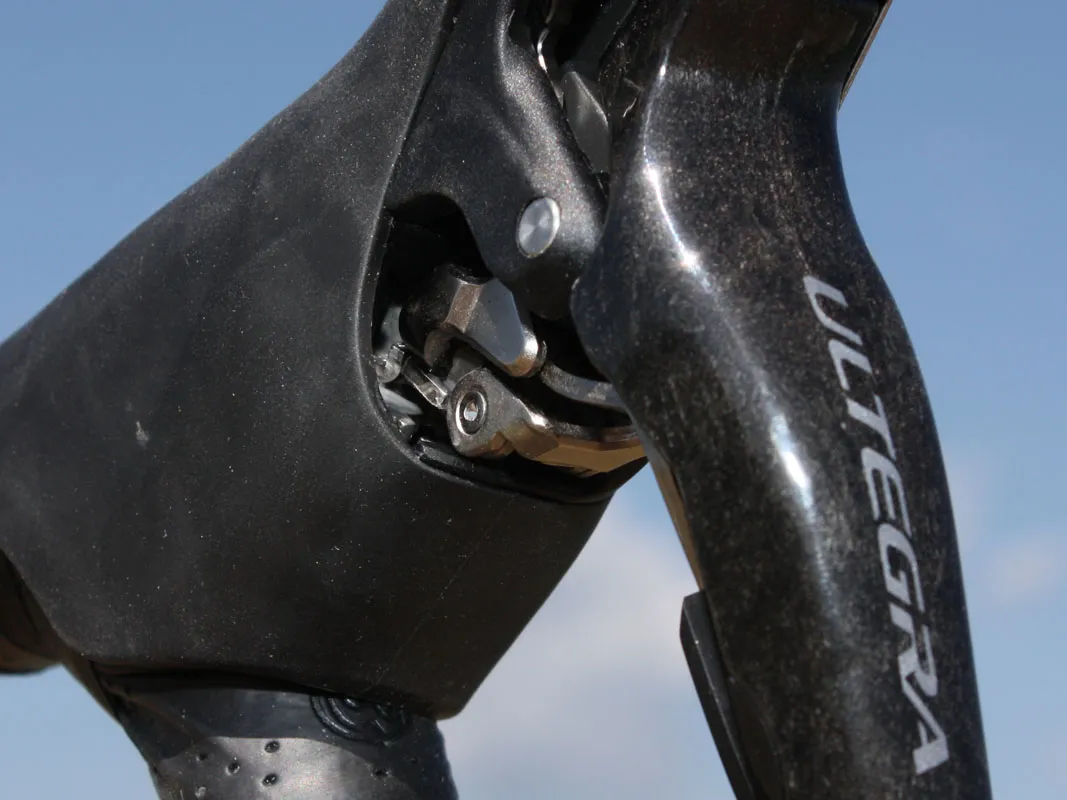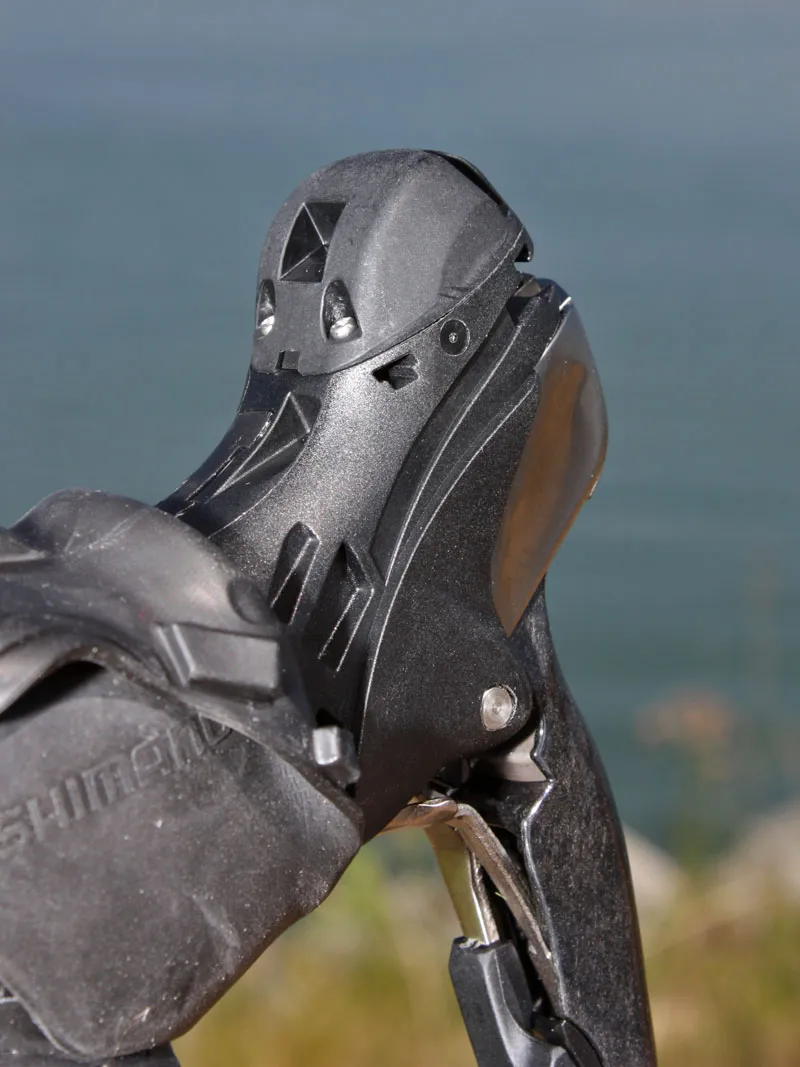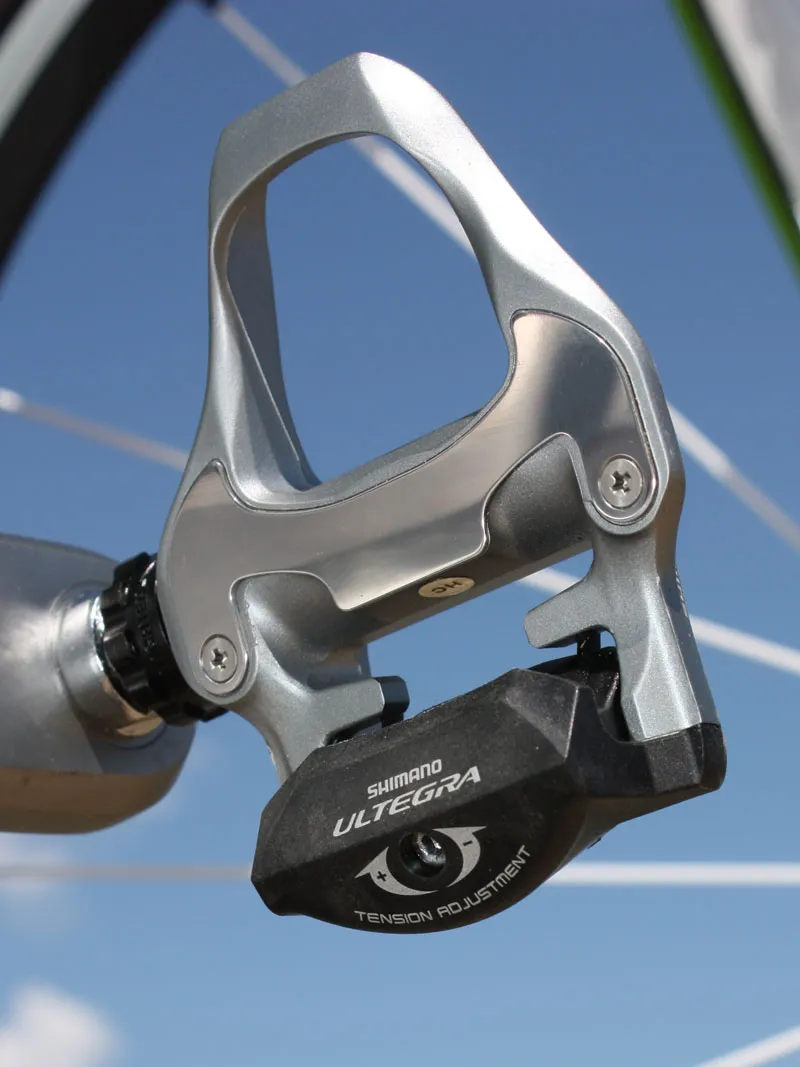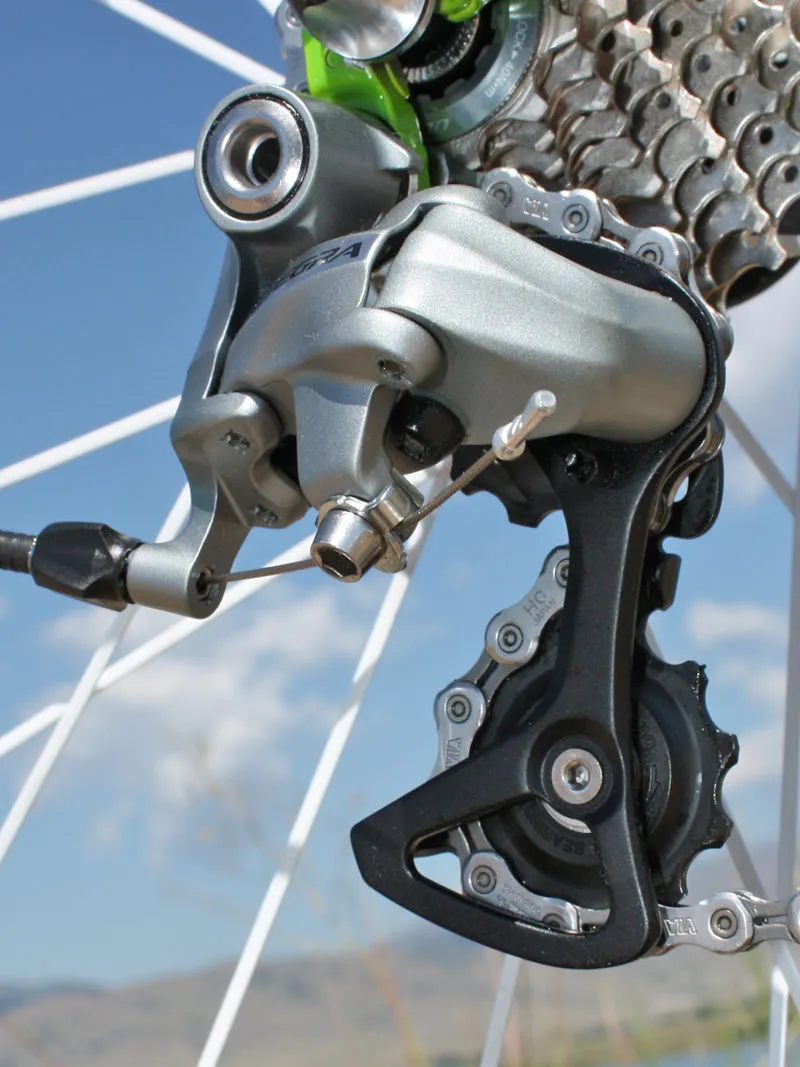Shimano's Ultegra road group has long been the workhorse of the lineup, offering near-Dura-Ace functionality and weight but with prices that average consumers could afford.
We published our first ride impressions of the new 6700 groupset earlier this year, but now we've had a chance to really put it to the test with several months on the road.
The all-new Ultegra loses some weight – over 150g! – and has gained trickle-down changes from its recently revamped Dura-Ace 7900 stablemate, but along with the good comes a few letdowns.
Ergonomics – flatter perch, easier reach
The all-new Ultegra 6700 STI Dual Control levers are a virtual dead ringer for Dura-Ace: they're now more rectangular in profile with less of a taper than before, the body has more girth and is similarly squared off, and the straighter top surface makes for a flatter transition to the bar.
The outwardly canted carbon fibre main lever blades are shapelier and easier to reach from the hoods, plus they're easier on bare skin when it's cold. Now that the shift cables are neatly concealed beneath the bar tape, the once-prominent bulb atop the lever has been downsized (for better or worse depending on your grip preferences) and the overall look is more businesslike than before.
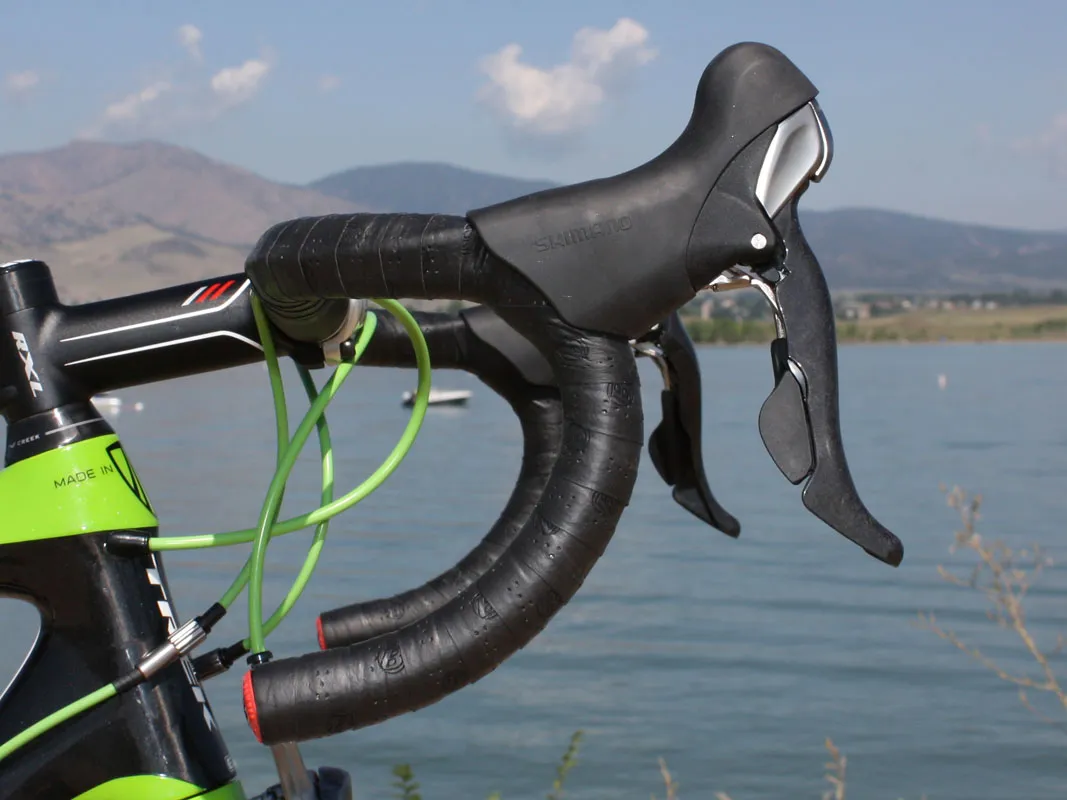
Not everyone will be happy with the new shape. The larger body (1cm bigger in circumference than 6600 at the narrowest point and a whopping 3cm at the base) will appeal to those with larger hands but those with smaller mitts may find it hard to get their fingers wrapped around. Though it offers a more positive feel overall, the squared-off shape feels a bit less organic, too.
Reach adjustment is now built in, however – well, sort of. Unlike Dura-Ace's hidden screw-type adjustment, Ultegra's reach is tuned by inserting one of two included rubber shims. True, the adjustment increments aren't as fine as a result but the rubber shims handily fill in the space for a more finished look than Dura-Ace's unsightly gap.
Shift performance – hidden cables but more friction
There's simply no way around it: the new hidden cables look better but the more convoluted routing also yields noticeably more friction than before – and unfortunately, Shimano's 1:2 cable pull ratio makes it more sensitive to that friction than its main competition.
Whereas the Ultegra 6600 levers feel silky smooth, light and positively connected to the derailleurs, 6700's feel is more vague and heavier, and the connection is slightly muddied. High-zoot cable sets such as those from Gore help, so you may want to factor that into the budget.
In addition, the repackaged internals also yield lever throws that are at least as long as before with a similar amount of 'dead space' before anything actually happens. Long-time Shimano users likely won't notice much but shifts require more movement than Campagnolo's Ergopower and feel like a veritable mile versus SRAM's ultra-short mechanism.
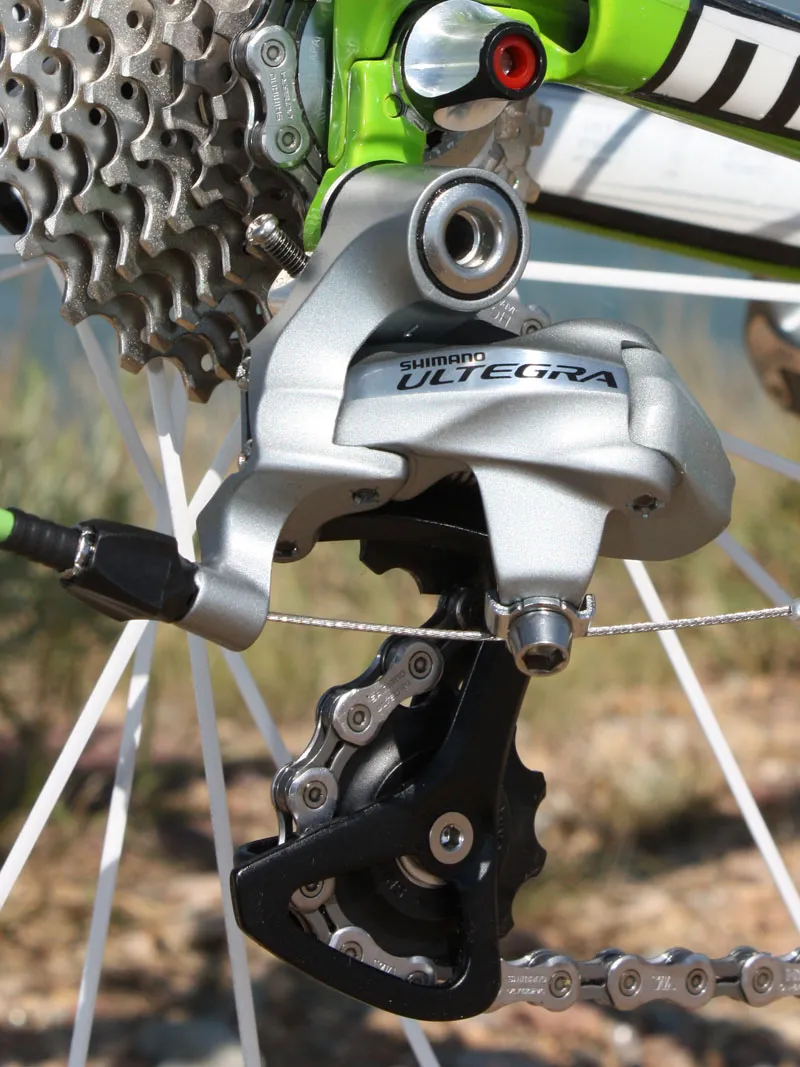
Overall rear shift performance is still excellent, though, with reliably consistent chain movement across the cassette – it's just not as direct feeling anymore. Just as with Dura-Ace, downshifts are now limited to just two gears per full sweep instead of three – bummer.
On the other hand, front shift performance is awesome thanks largely to the stiffer front derailleur pivots and fantastic new outer chainring (more on that later). Full-power upshifts and downshifts are impeccably smooth and well controlled, and a notable step or two ahead of the pack.
Unlike with the new Dura-Ace, there are trim positions for both the inner and outer ring but even so, the careful cage profile means you'll almost never have to use the outer one – chain rub is virtually nonexistent depending on setup.
We tested the standard drive configuration (130mm BCD, 53/39T) but from experience with other Shimano groups have no reason to expect the compact version to be any different performance-wise. In case you need it, there's a triple option, too.
Braking performance – superb power and control
The revised cable pull ratios and pad compounds introduced on Dura-Ace 7900 make their way on to Ultegra 6700 and the results are just as impressive. Braking power in the dry is far improved with superb fingertip modulation and in contrast to the shifting, lever feel is more positive and direct than before. The calipers still aren't as light as some fancier boutique models but the new Ultegra easily bests the vast majority of them in terms of pure functionality.
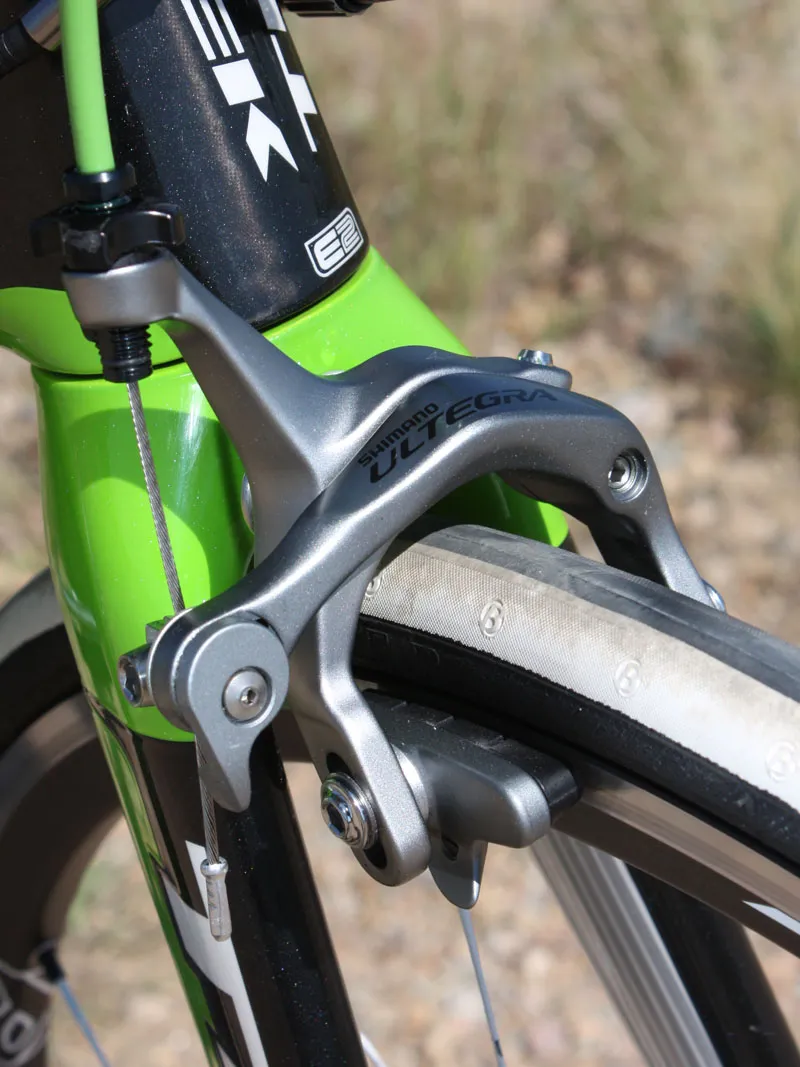
Caliper construction is analogous to Dura-Ace with cold forged aluminium arms that are aggressively hollowed out on the backside to shave a few grams without overly affecting rigidity and tidy low-profile barrel adjusters that are easier to grab on the fly and also make for more gradual housing bends. The handy ratcheting quick-release is still included as are the centring screws.
Notably absent (as with the previous generation), however, are spring tension adjusters, though to be fair it's unlikely you'll miss them unless the cable routing on your frame is particularly awful.
Drivetrain – silky smooth with an awesome new crank
Relative to 6600, the new Ultegra crank sports an edgier, more aggressive shape reminiscent of the new Dura-Ace. Though the hollow-forged aluminium arms don't feel any stiffer under power (nor do Shimano claim they are), the spider is much deeper and combines with the newly carbon-reinforced hollow outer ring for massive chainring rigidity.
Why the big fuss about chainring stiffness, you ask? In addition to the aforementioned massive improvement in full-power shifting performance, the stouter construction also makes for reduced flex (or failure for the particularly quad-enhanced) when you're cranking along in the cross-gear combination.
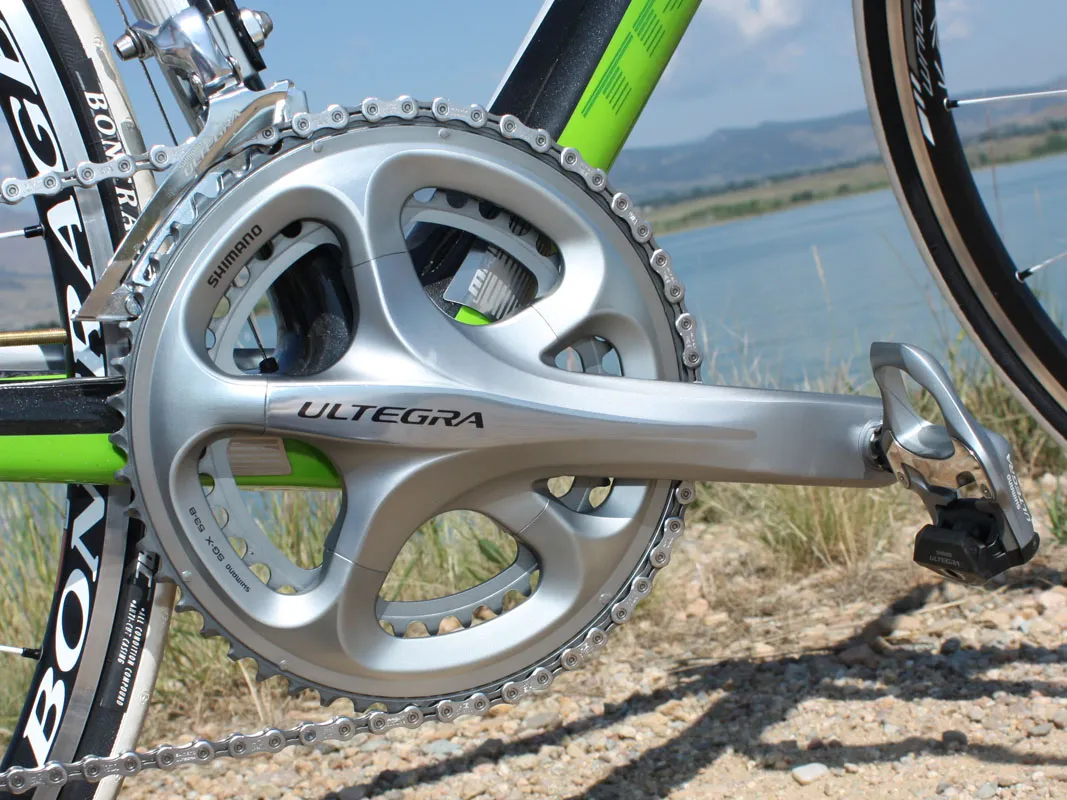
Replacement outer rings are more expensive than last year's flat plate-style pieces – but not nearly as much as Dura-Ace – though in this case at least, the money has yielded a tangible and marked increase in performance.
The cassette has received only very minor revisions and the SPD-SL pedals just a new finish but the chain is all-new with a directional design borrowed from Dura-Ace plus slotted inner plates to shave a few grams.
Just as with its big brother, the Ultegra chain runs whisper-quiet, meshes perfectly with its matching chainrings and cassette, and can now be joined with a convenient reusable master link.
Service and maintenance – don't lose those tiny little screws
Installation and general maintenance for Ultegra 6700 should strike most experienced wrenches as old-hat as most of the key mechanical aspects have carried over, such as the familiar pinch-bolt attachment method for the non-driveside crankarm and standard adjustment procedures for the derailleurs and brakes.
Feeding the cables into the new levers is a different story as the seats for the derailleur cables are now a little harder to find (they're now fed into the spool at the body after peeling back the hoods) and derailleur housing swaps now require you to unroll the tape, too.
The latter shouldn't be a big deal as the rearmost section of housing is what usually needs to be replaced anyway, but even so, it's a bit of a chore to get the inner cable to make the bend into the first section of housing at the lever body if you're not starting fresh.
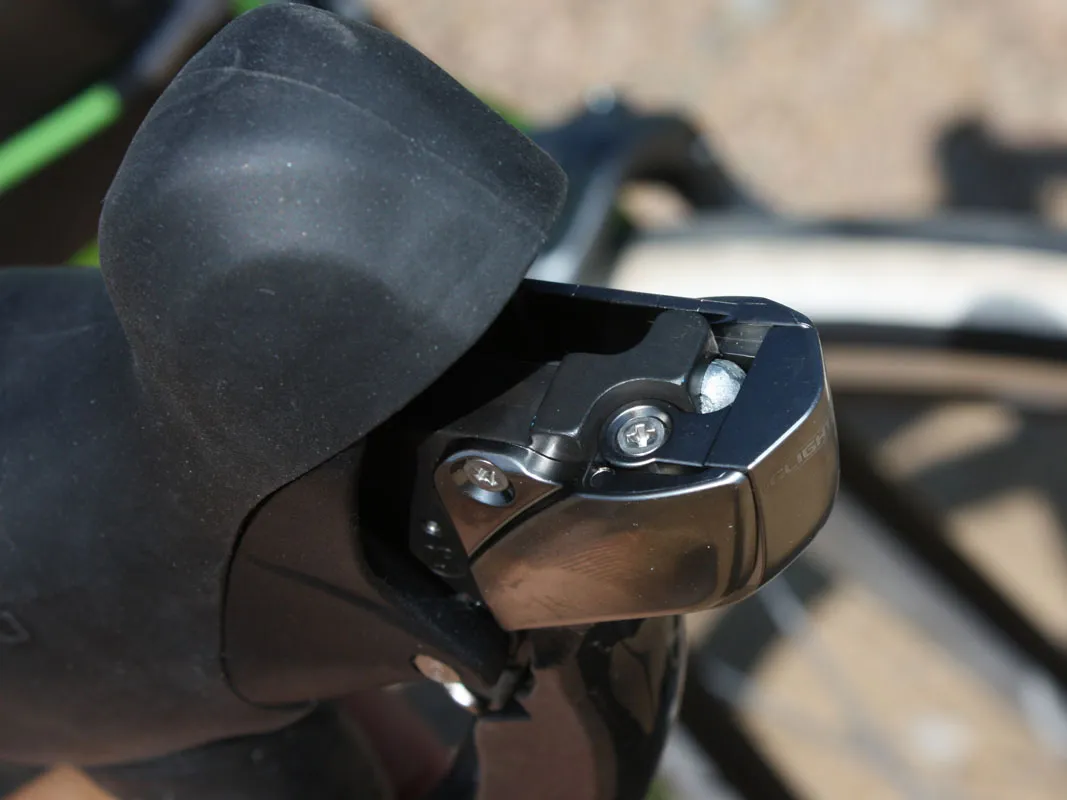
Brake cable replacements are slower than before as the access point in the lever is now concealed by a small cover plate secured by an even tinier Phillips head screw (and unlike with Dura-Ace 7900 you have to remove the screw completely). Why the easy-access setup of the old version couldn't be carried over we can't say but just be sure to keep your work area clean when performing this particular operation.
Cyclo-cross riders and roadies who regularly head out in nasty conditions should also take note that the Ultegra STI levers' shift internals are just as perilously exposed as they are with Dura-Ace – you can literally see the various ratchets, pawls and springs without even pulling back the hoods. Keep that in mind the next time you stuff it in a sand pit.
Compatibility
The new brake cable pull geometry means pairing the new levers with existing brakes will yield a firm feel with less power than intended but it'll still work. Unlike Dura-Ace, however, the new levers are fully backwards compatible with older derailleurs and vice-versa as there was no major change to the front derailleur cable pull ratio. Likewise, chainring and cassette spacing use the same 10-speed standard as before so those are interchangeable with older versions as well.
Ultegra 6700 – best version yet or more of a lateral move?
Shimano have finally silenced their external shift cable routing critics by concealing the lines but have hurt their trademark Light Action shifting feel in the process. Though appreciably lighter than before and with best-ever front shift performance and braking, the new Ultegra is still a notable letdown in the all-too-important metric of rear shift performance. It's vague feeling, the throws are much too long, and the fact that you can now only downshift two rear gears per sweep instead of three is a definite step backwards.
Overall, Ultegra 6700 is still a pretty good package with Shimano's usual high levels of fit and finish, and riders coming from much older equipment are sure to be impressed. But just as we found with Dura-Ace 7900, riders on the previous generation of Ultegra (especially the superb SL variant) won't be quite as compelled to upgrade.
